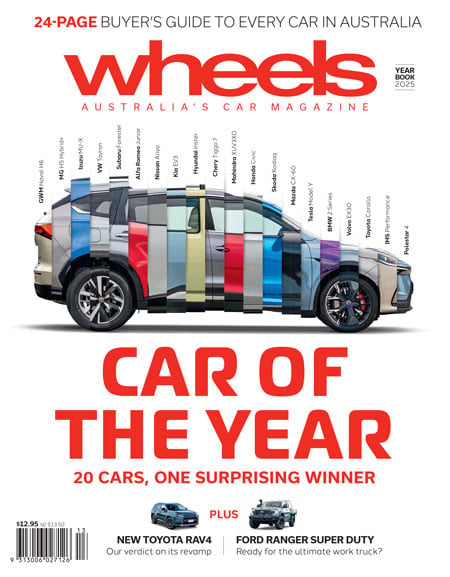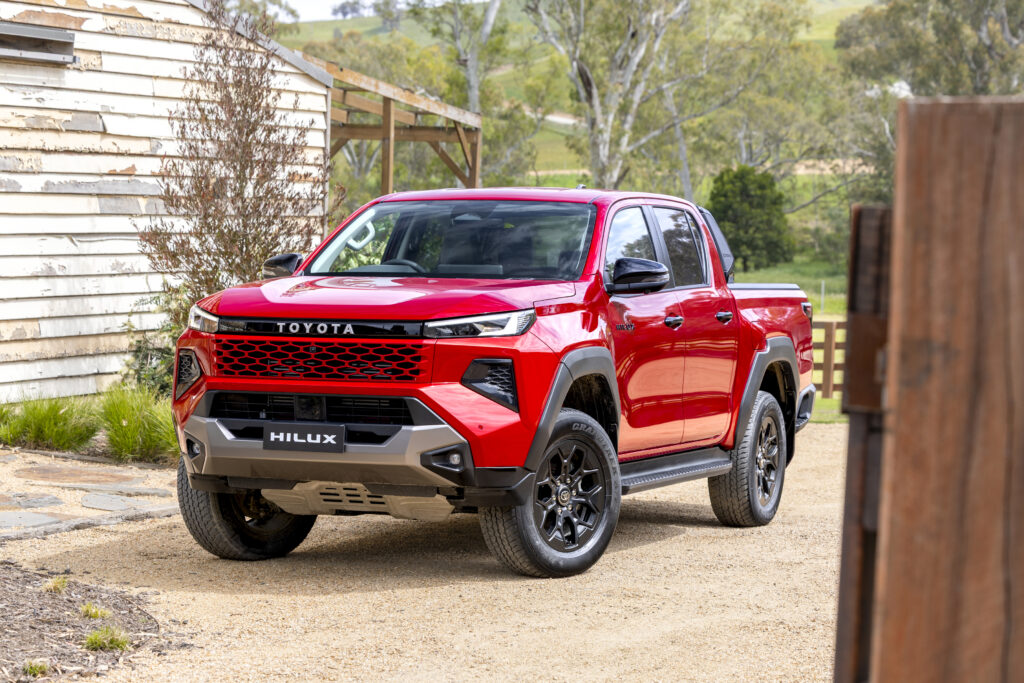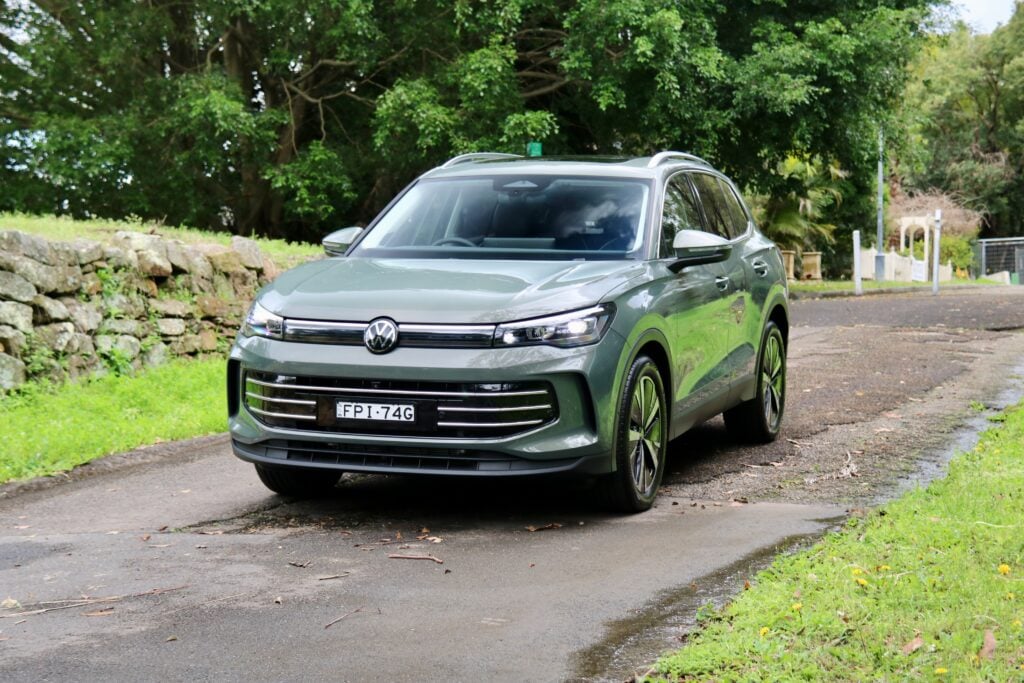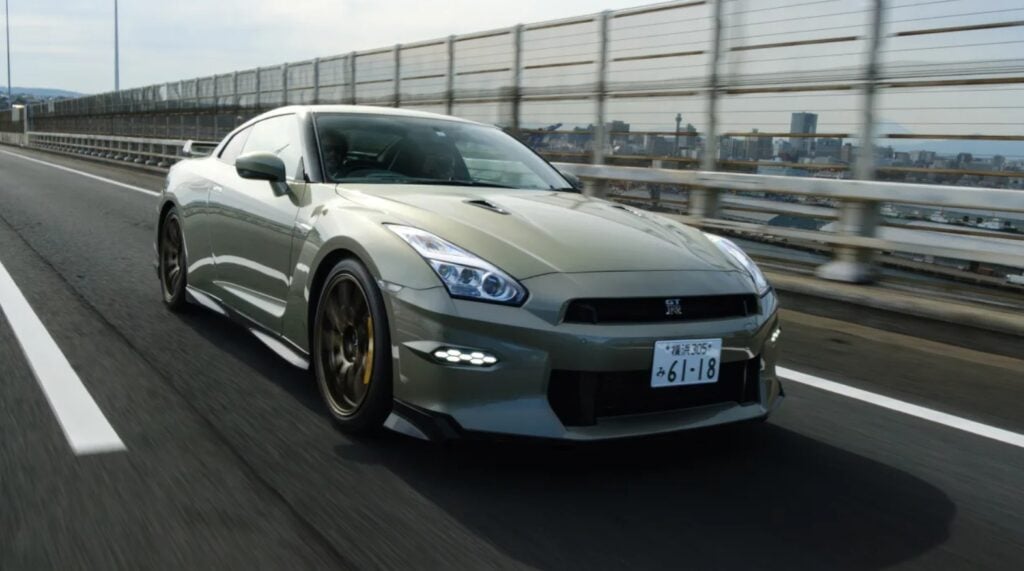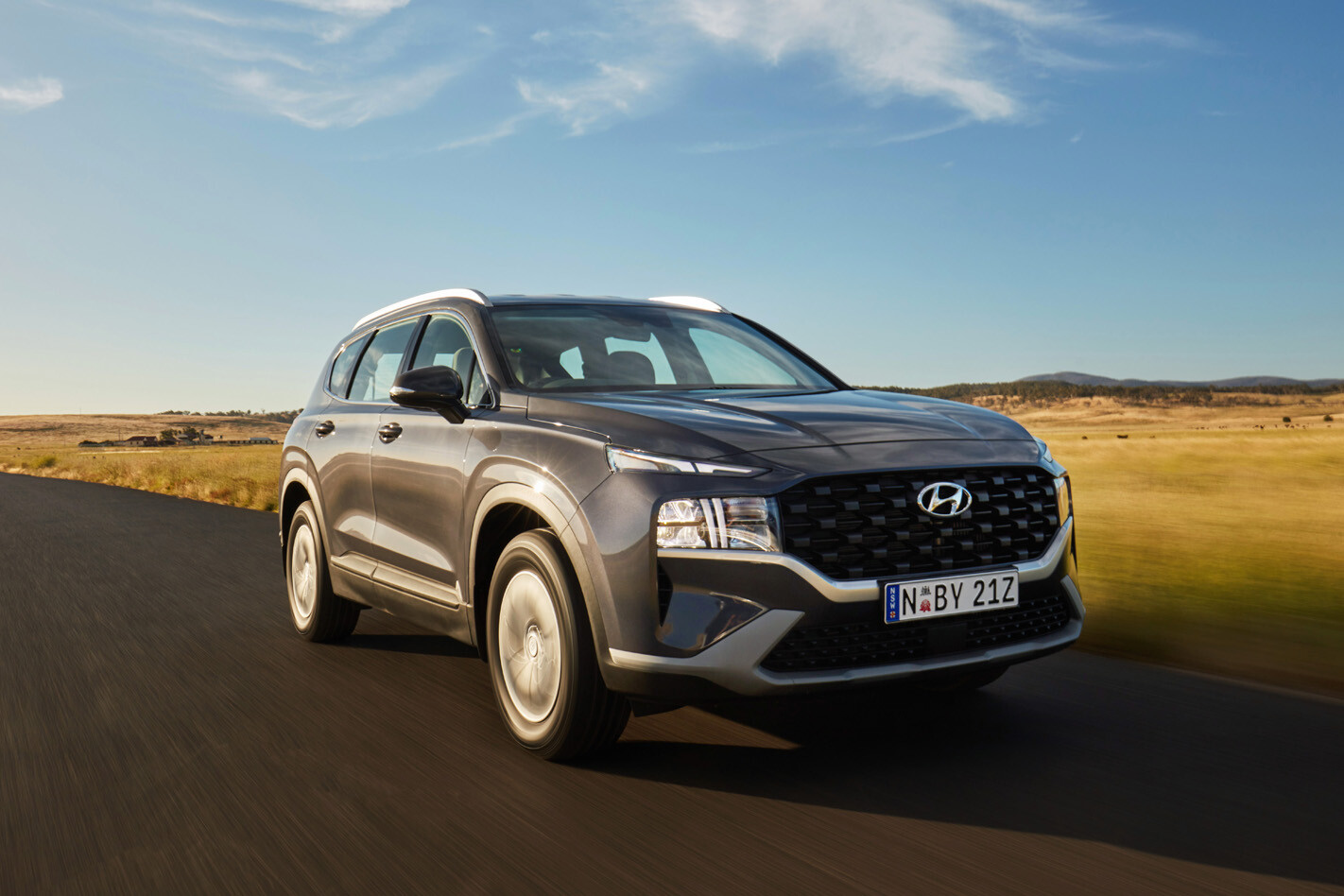
Things we like
- Practicality
- Grunty performance
- Comfy seats
- Ride quality
Not so much
- It's slightly more expensive than the CX-8
If you need a clue as to why large Sport Utility Vehicles are a key battleground among manufacturers, look at the sheer number of them on the market.
Despite trailing small and medium SUVs for sales, the large SUV category bustles with more models than the former groups.
Enter the seven-seat Hyundai Santa Fe. Three years after the fourth-generation model debuted in 2018, the Korean brand decided a superficial nip and tuck was not enough to catapult its large SUV contender to the sales lead.
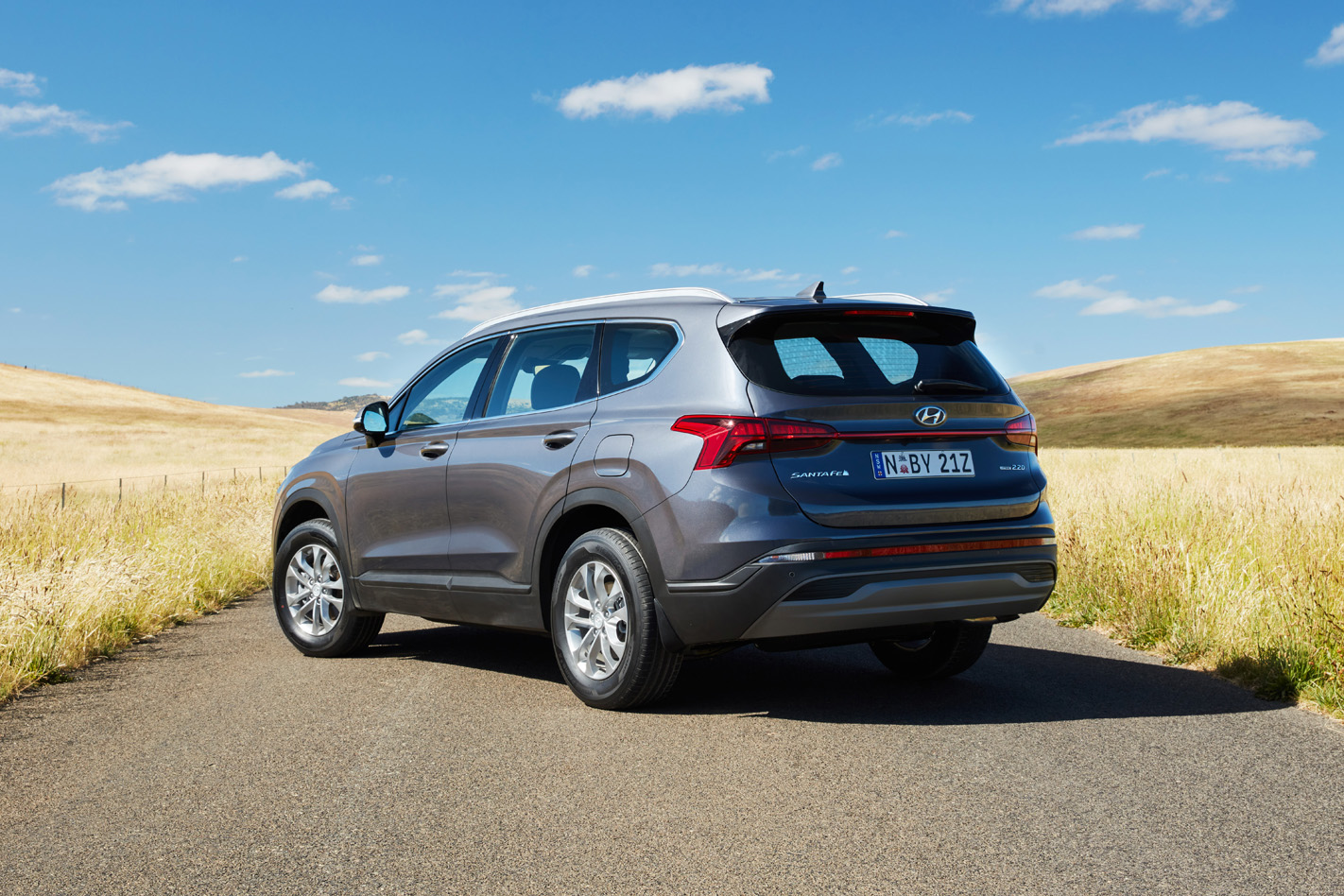
Our test subject is the base Santa Fe equipped with a 2.2-litre four-cylinder diesel engine. It also replaces the eight-speed automatic behind the petrol engine with an eight-speed dual-clutch transmission for faster gear shifting and better fuel economy.
Although a diesel engine attracts a $2500 premium, it remains the only way to option all-wheel drive. All right-hand-drive V6 versions are front-wheel drive.
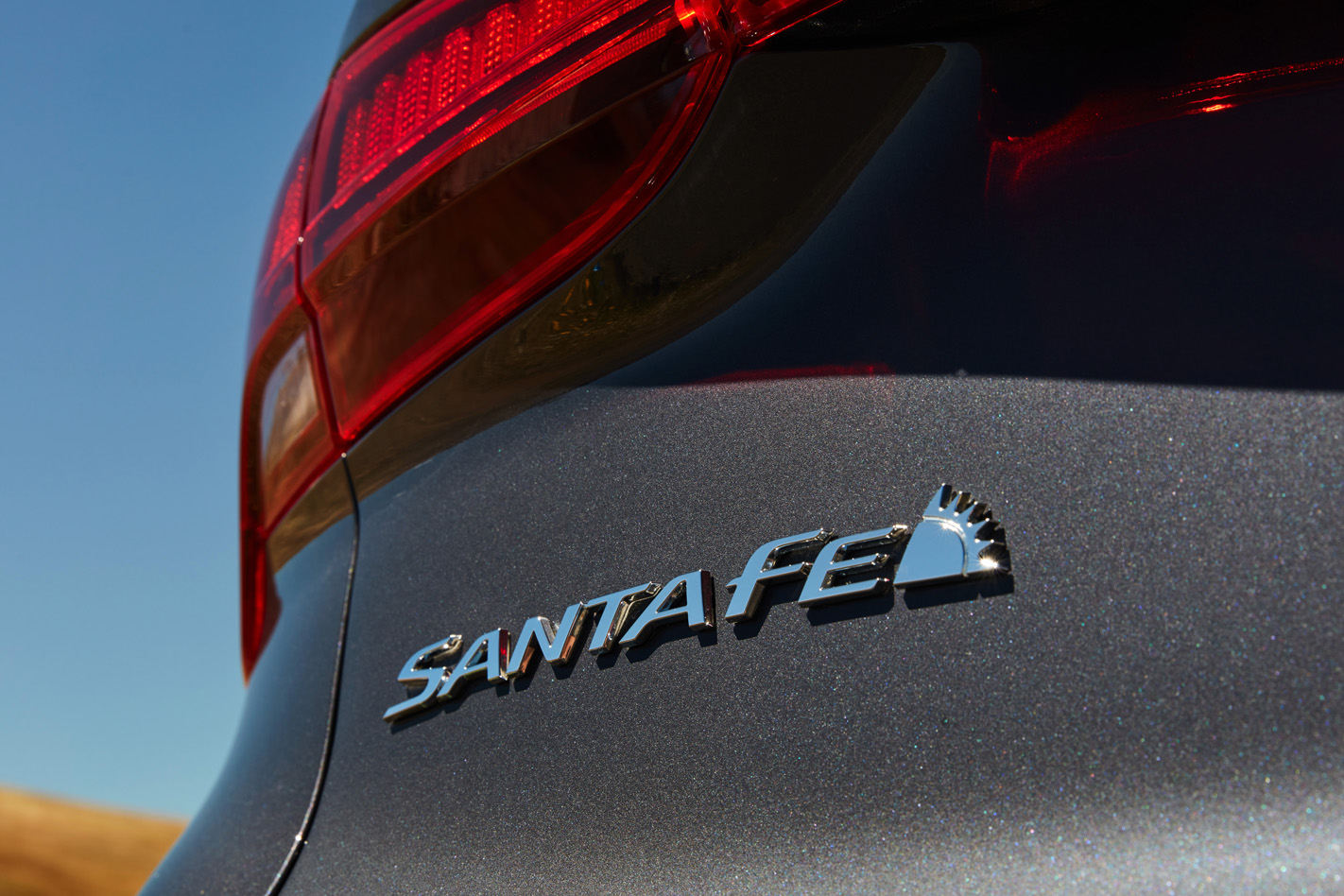
That means you should be able to extract around 1000km from a 67-litre tank of diesel that should cost about $95-$100 to fill up, depending on bowser prices. Service intervals are every 12 months for the first five years at $399 for each visit. Meanwhile, the Santa Fe comes with a five-year unlimited-kilometre warranty – which is standard among rivals.
The specifications list is relatively basic for something that costs $48,200 before on roads and comes in at just under $50,000 driveaway. For instance, the base Santa Fe misses out on gearshift paddles and Terrain Mode selector. They are instead available on the Active trim that costs another $3600.

And if you like going off-road, then you might want to know Santa Fe has a paltry 17.9-degree approach and 19.3-degree departure angle. And specific off-road technology includes 4WD lock, hill descent control, hill start assist control and downhill brake control.
Of course, the Santa Fe is more suited to an urban jungle than a real one and to that end it features an electronic parking brake, two-stage rear wiper and switchgear for audio, phone and cruise control functions on the steering wheel. Fancy rain-sensing wipers, push-button start and driver seat memory are instead saved for the Active trim.
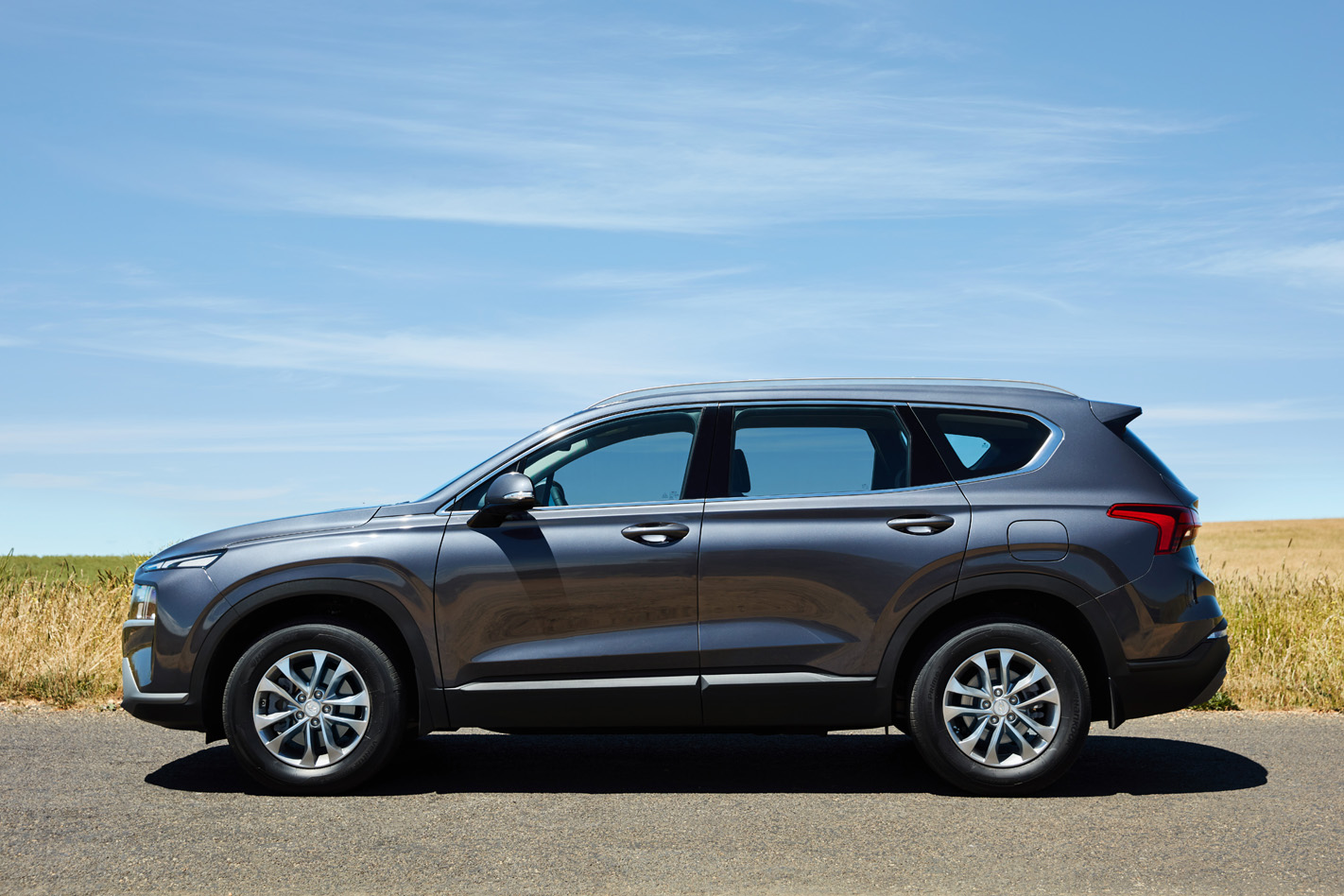
It’s the same situation inside, where the base Santa Fe misses out on a futuristic-looking new centre console and updated gear-selection buttons, settling for a more traditional gear lever arrangement and drab looking panel for the single-zone climate control. Base and Active trims also score an eight-inch centre touchscreen instead of the 10.25-inch version on higher-spec versions.
Smartphone mirroring and wireless charging, a leather steering wheel and gear lever, one-touch window functionality, heated side mirrors and keyless central locking are all standard, though.
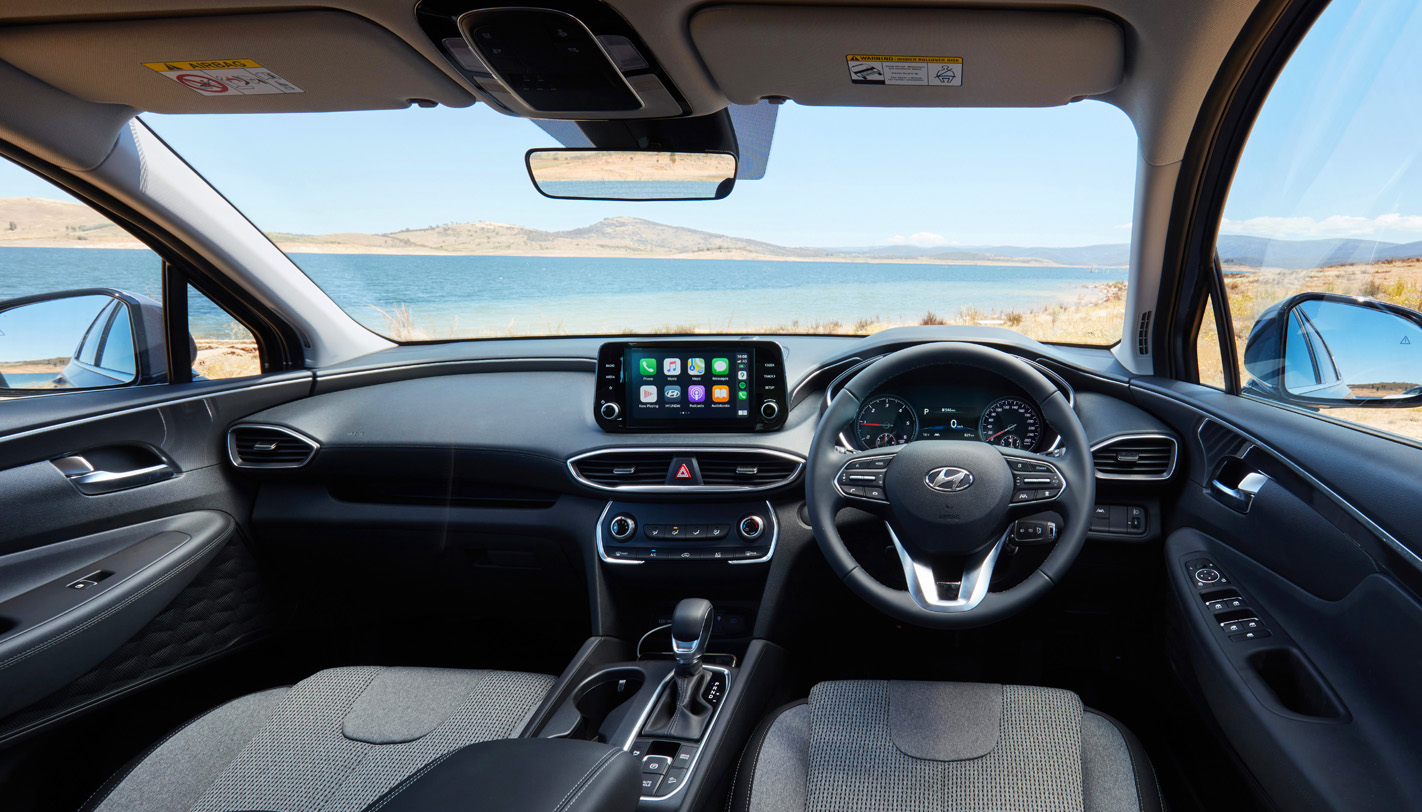
While this list of standard mod-cons compares well with a segment leader like the Toyota Kluger, these SUVs are purpose-built to swallow seven people in relative comfort. Hyundai claims the new larger body has unlocked more interior room, offering improved knee room in the second row for full-sized adults.
Of course, there’s the benefit of being able to recline the second-row seats or slide them forwards to give third-row passengers extra knee room. However, the third row would only suit children or adults who are only travelling a short distance.
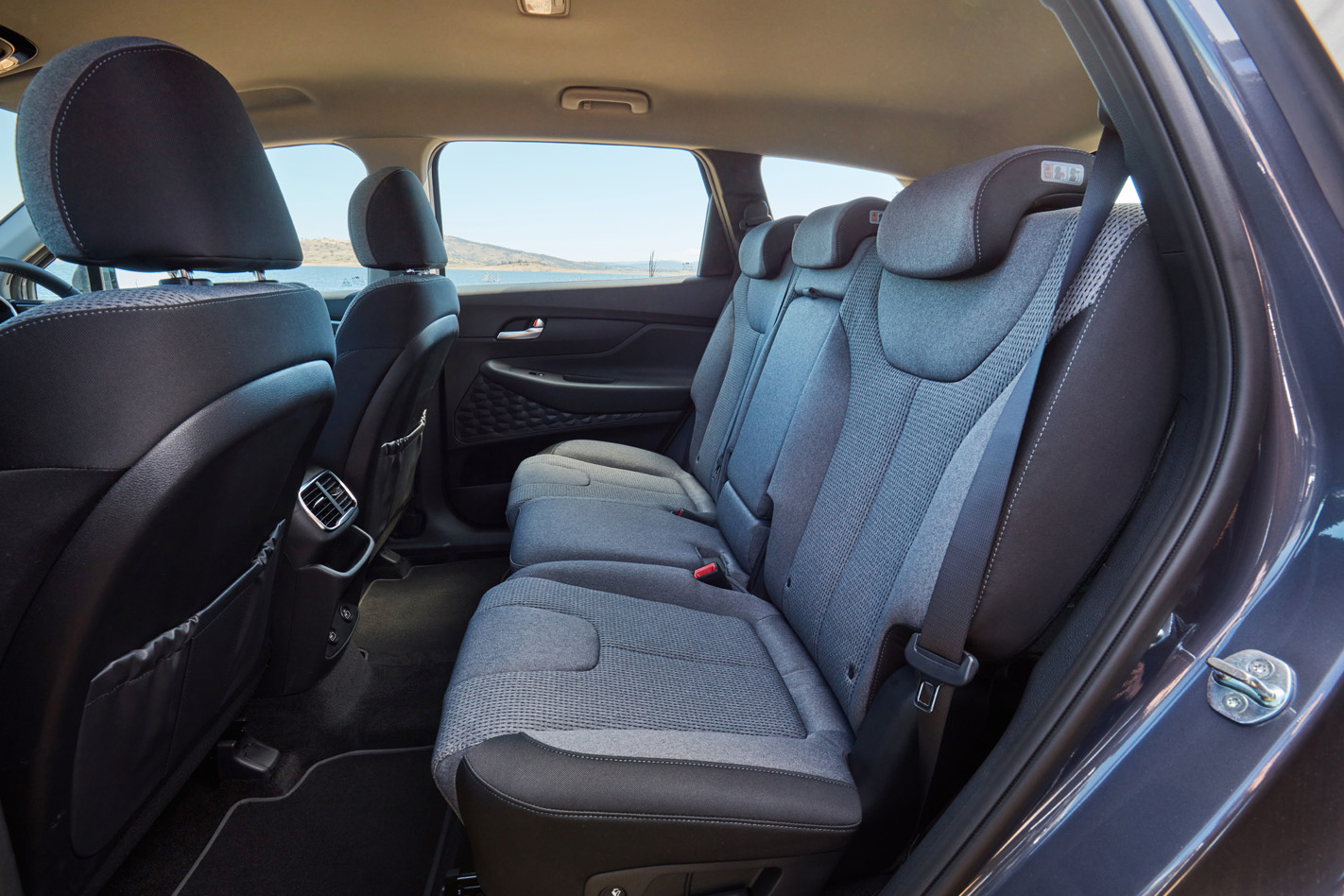
Minimum cargo space with all three rows up is at 130L. That expands to 571L when the third row is folded flat and represents a 24 litre increase on the old Santa Fe. Fold the second row down at Hyundai says the boot can hold up to 1649L worth of cargo, or 25 litres more than before.
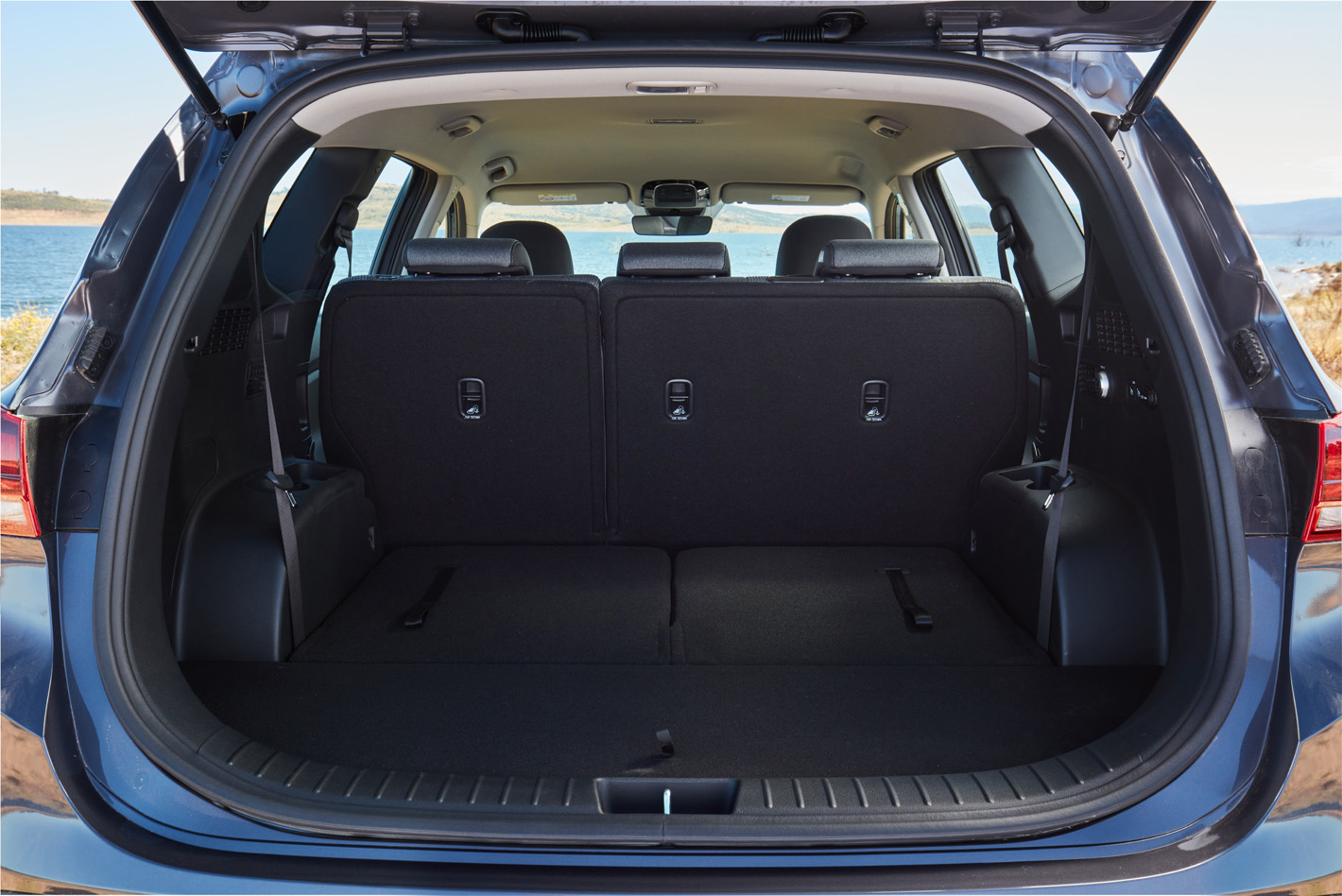
The first thing you notice after sitting inside is the excellent front seats with perforated inserts. Despite lacking power adjustment or any fancy massage function, the base-spec front seats are comfortable, supportive and cushioning, often leaving you rejuvenated after time in them. It’s the same deal for the second row.
They suit the cabin design that remains thoughtfully designed and familiar in layout for a Hyundai, placing the door handles up high and switches where you expect to find them. Forward visibility is excellent, with designers trying hard to open up the blind spot often behind a thick A-pillar base, wing mirror and ill-placed tweeter.

All up, a kerb weight of 1820kg makes the Santa Fe diesel 85kg heavier than the petrol variant. However, on the road, it barely feels laboured by its extra heft. The combination of grip, low-down torque and rapid gear shifts launches the Santa Fe with ease, while tight gear spacing bolsters acceleration up to highway speeds.
Hyundai has also tuned an excellent ride and handling package for the Santa Fe. It delivers a supple ride around town on comically large-sidewall Hankook tyres without hampering positive steering response, so it’s a nice thing to dart through traffic and take corners in.
It’s equally as comfortable out on the highway. The cabin is insulated well enough to allow easy conversation with passengers and the suspension wafts over undulations while remaining settled. The safety systems intervene with a Hyundai-typical soft touch, as well.
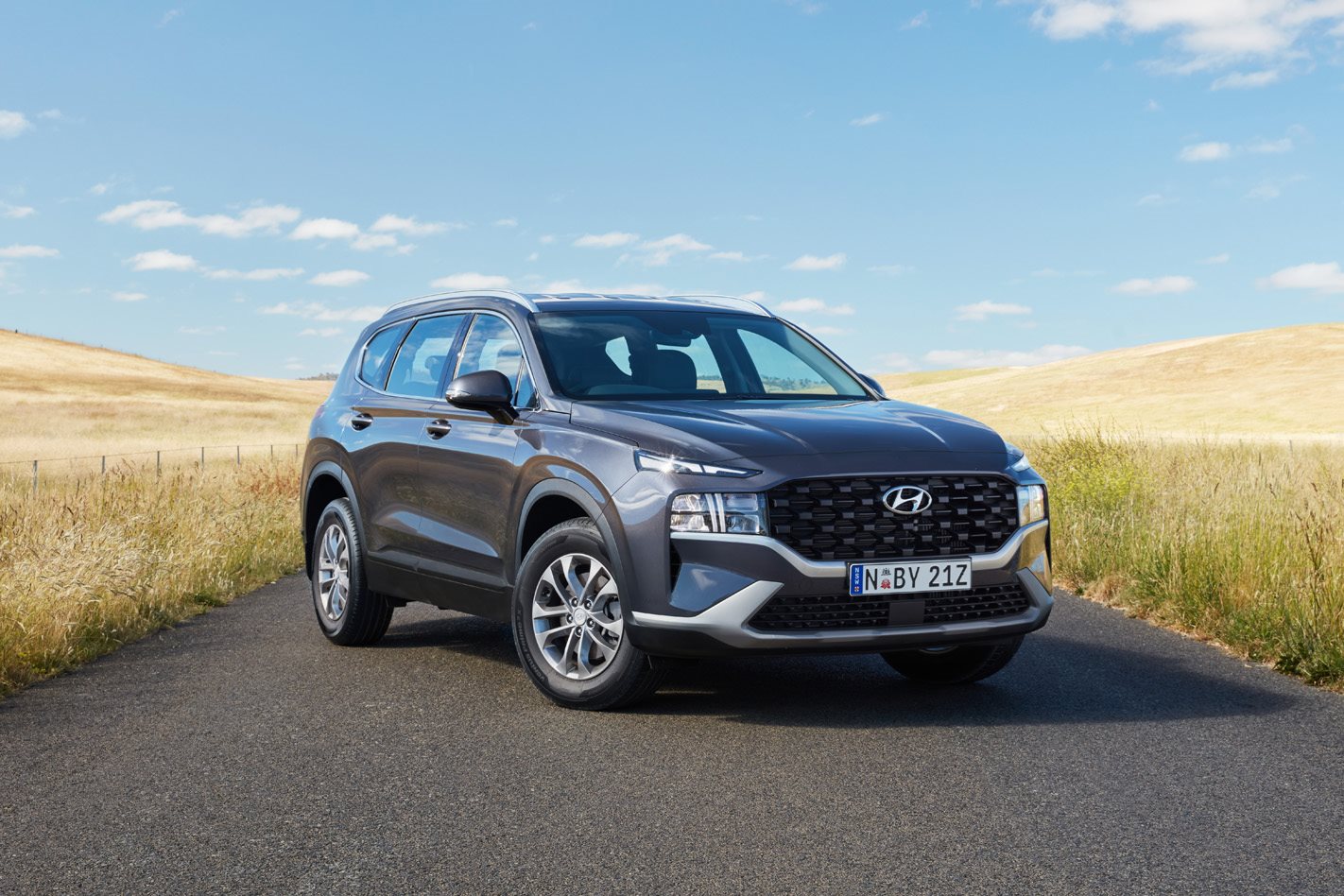
While we didn’t get a chance to test either its all-wheel-drive system or towing ability – rated at 2500kg braked or 750kg unbraked, while its tow ball download rating has doubled to 200kg – they represent at least a nominal extension of its talents.
You’d struggle to match the Santa Fe among rivals at this price, with the Kluger lacking a diesel option and a lot of the Santa Fe’s modern conveniences, while the petrol Skoda Kodiaq 132 TSI is down on torque and power compared to the Santa Fe diesel.
One exception, however, is the Mazda CX-8. At $46,990 for the diesel all-wheel-drive Sport, it undercuts the base Santa Fe by at least $1000 with a more comprehensive equipment list with stuff like the digital radio or three-zone climate control instead of a wireless charging pad.
But for a fresh statement in the crowded SUV category, the Hyundai Santa Fe stands out for good reason.
Specifications: Hyundai Santa Fe
Body: 5-door, 7-seat SUV Drive: all-wheel drive Engine: 2151cc 4-cyl, 16v, turbo Power: 148kW @ 3800rpm Torque: 440Nm @ 1750-2750rpm 0-100km/h: N/A Fuel consumption: 6.1L/100km (combined cycle) Weight: 1820kg Power/weight: 81kW/tonne Transmission: 8-speed dual-clutch transmission Suspension: struts, anti-roll bar, springs, dampers (f); multi-links, anti-roll bar, springs, dampers (r) L/W/H: 4785/1900/1685mm Wheelbase: 2765mm Tracks: 1651/1661mm Brakes: 325mm ventilated discs, sliding caliper (f); 305mm solid discs, sliding caliper (r) Tyres: 235/65 R17 108V (f/r) Wheels: 17 x 7.0-inch (f/r) Price: $48,200
Things we like
- Practicality
- Grunty performance
- Comfy seats
- Ride quality
Not so much
- It's slightly more expensive than the CX-8

